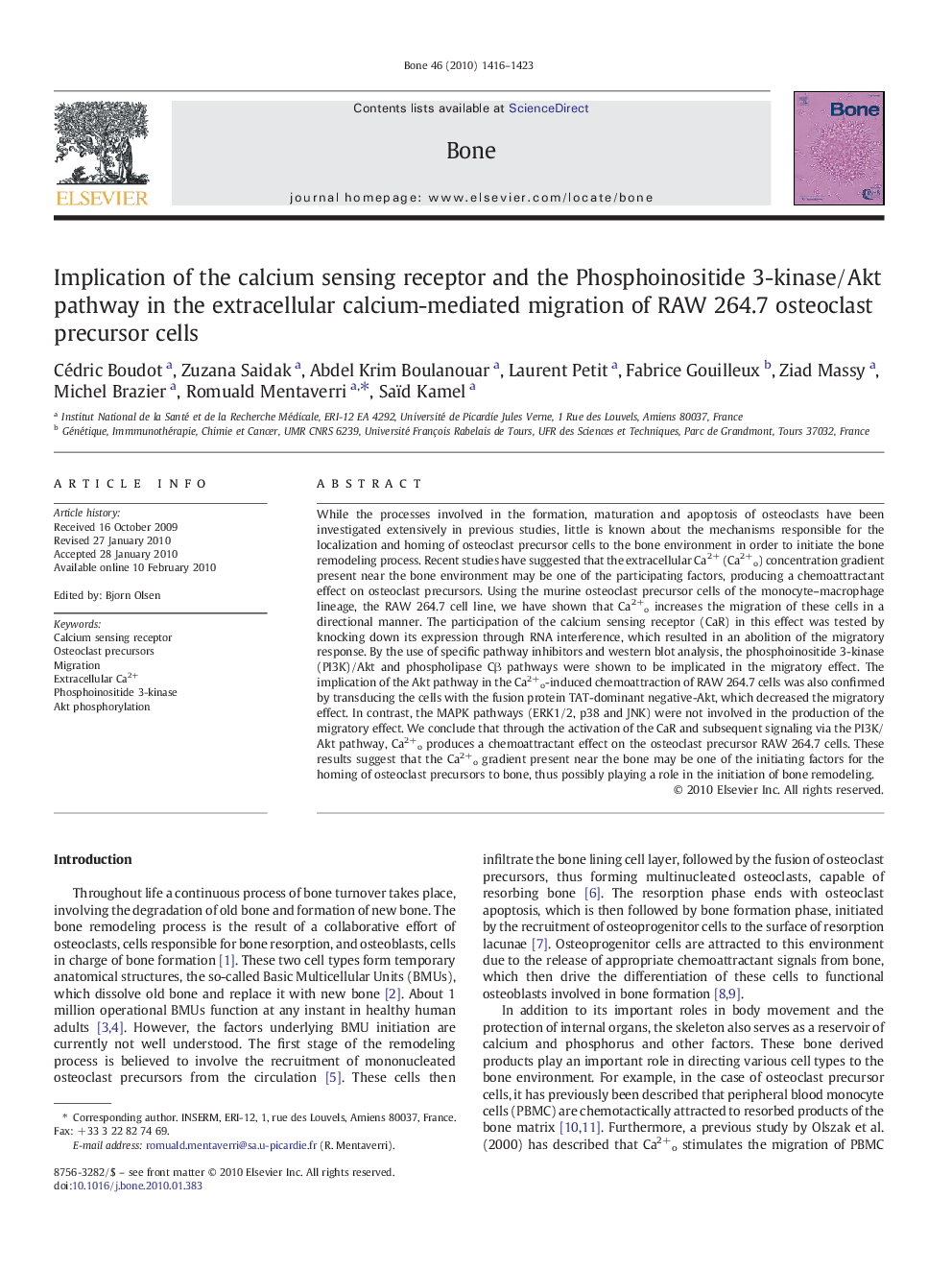| کد مقاله | کد نشریه | سال انتشار | مقاله انگلیسی | نسخه تمام متن |
|---|---|---|---|---|
| 5892265 | 1153302 | 2010 | 8 صفحه PDF | دانلود رایگان |
عنوان انگلیسی مقاله ISI
Implication of the calcium sensing receptor and the Phosphoinositide 3-kinase/Akt pathway in the extracellular calcium-mediated migration of RAW 264.7 osteoclast precursor cells
دانلود مقاله + سفارش ترجمه
دانلود مقاله ISI انگلیسی
رایگان برای ایرانیان
کلمات کلیدی
موضوعات مرتبط
علوم زیستی و بیوفناوری
بیوشیمی، ژنتیک و زیست شناسی مولکولی
زیست شناسی تکاملی
پیش نمایش صفحه اول مقاله

چکیده انگلیسی
While the processes involved in the formation, maturation and apoptosis of osteoclasts have been investigated extensively in previous studies, little is known about the mechanisms responsible for the localization and homing of osteoclast precursor cells to the bone environment in order to initiate the bone remodeling process. Recent studies have suggested that the extracellular Ca2+ (Ca2+o) concentration gradient present near the bone environment may be one of the participating factors, producing a chemoattractant effect on osteoclast precursors. Using the murine osteoclast precursor cells of the monocyte-macrophage lineage, the RAW 264.7 cell line, we have shown that Ca2+o increases the migration of these cells in a directional manner. The participation of the calcium sensing receptor (CaR) in this effect was tested by knocking down its expression through RNA interference, which resulted in an abolition of the migratory response. By the use of specific pathway inhibitors and western blot analysis, the phosphoinositide 3-kinase (PI3K)/Akt and phospholipase Cβ pathways were shown to be implicated in the migratory effect. The implication of the Akt pathway in the Ca2+o-induced chemoattraction of RAW 264.7 cells was also confirmed by transducing the cells with the fusion protein TAT-dominant negative-Akt, which decreased the migratory effect. In contrast, the MAPK pathways (ERK1/2, p38 and JNK) were not involved in the production of the migratory effect. We conclude that through the activation of the CaR and subsequent signaling via the PI3K/Akt pathway, Ca2+o produces a chemoattractant effect on the osteoclast precursor RAW 264.7 cells. These results suggest that the Ca2+o gradient present near the bone may be one of the initiating factors for the homing of osteoclast precursors to bone, thus possibly playing a role in the initiation of bone remodeling.
ناشر
Database: Elsevier - ScienceDirect (ساینس دایرکت)
Journal: Bone - Volume 46, Issue 5, May 2010, Pages 1416-1423
Journal: Bone - Volume 46, Issue 5, May 2010, Pages 1416-1423
نویسندگان
Cédric Boudot, Zuzana Saidak, Abdel Krim Boulanouar, Laurent Petit, Fabrice Gouilleux, Ziad Massy, Michel Brazier, Romuald Mentaverri, Saïd Kamel,